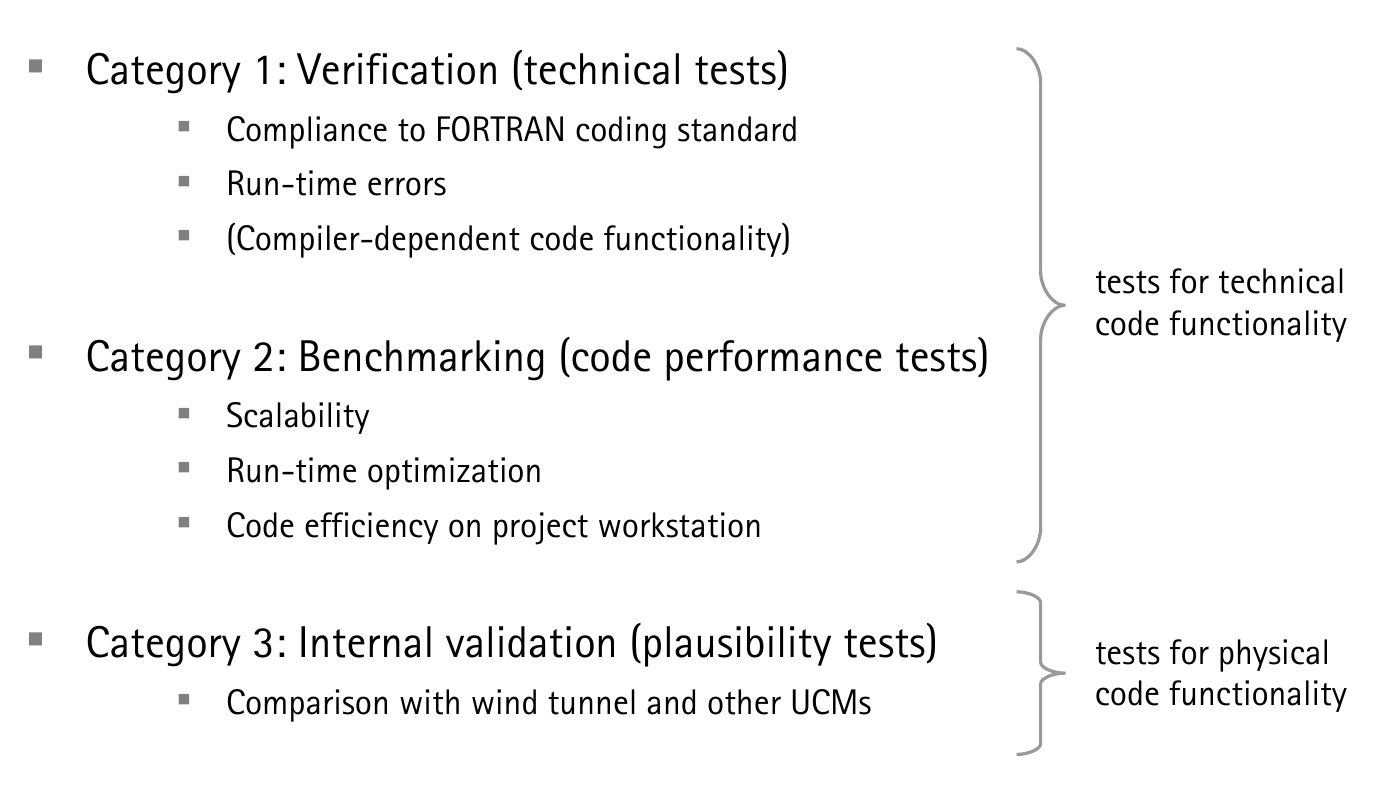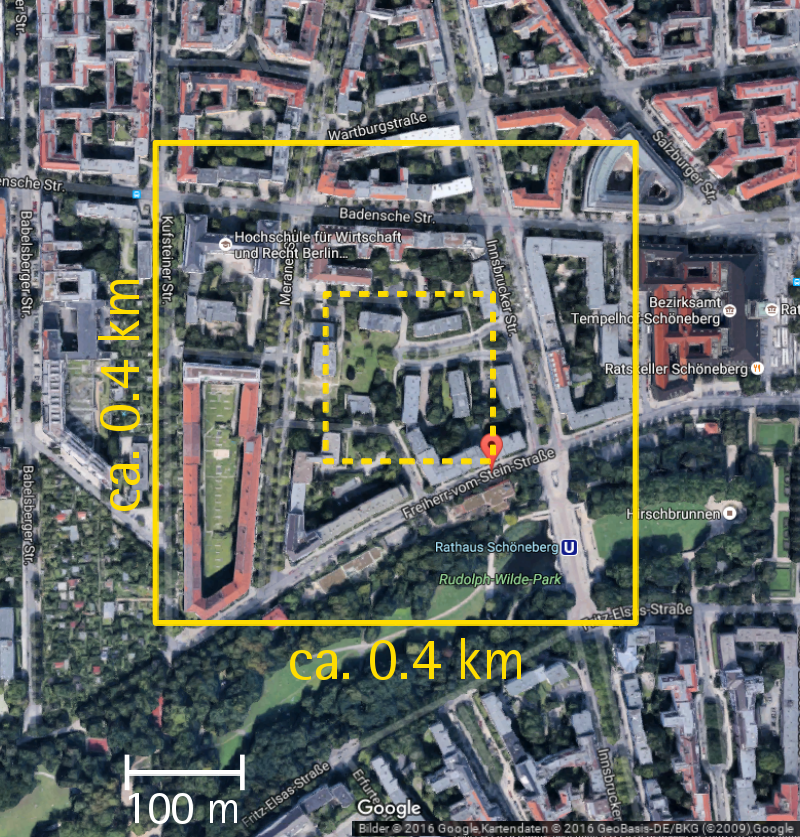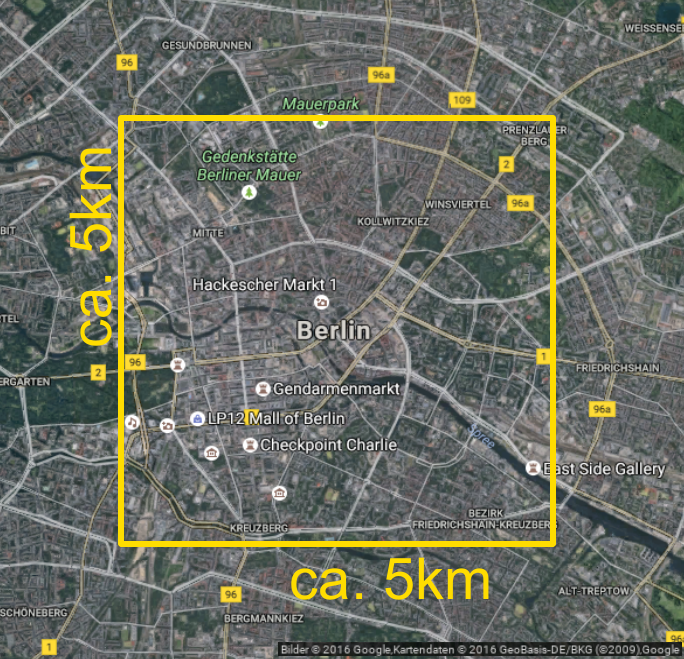| Version 6 (modified by kanani, 8 years ago) (diff) |
|---|
Code verification & benchmarking
The procedure of testing the overall functionality of the PALM-4U components is organized into three categories:
 Fig 1: Testing categories.
Fig 1: Testing categories.
Simulation setups for category 1
Category 1 includes checks of the PALM-4U source code for compliance to the general FORTRAN coding standard, as well as to the specific PALM formatting rules. Further, the code is tested for run-time errors as well as compiler-dependent functionality issues, and simulation results are checked for elementary plausibility. For this purpose (S)mall setups are sufficient, suitable to run on desktop PCs (2-4 processor cores) within a time frame of O(1-10min).
Three setups with different generic building topographies and tree distributions are available (see Fig. 2), making use of the urban surface model (USM), clear-sky radiation model, and plant canopy model (PCM). To summarize some of the setup features:
- Domain: 20 x 20 x 20 m³
- Grid size: 2m
- Moderate wind from west
- Clear-sky conditions, dry atmosphere (USM does not yet consider latent heat fluxes in surface energy balance)
- Cyclic lateral boundary conditions
 Fig 2: (S)mall setups with different generic building topographies and tree distributions.
Fig 2: (S)mall setups with different generic building topographies and tree distributions.
For each of the three setups, a .zip archive can be downloaded, containing INPUT, MONITORING, OUTPUT files and a README file with the setup documentation:
NOTE: Additional and more feature-specific setups can be created on an as-needed basis.
Simulation setups for category 2
Two differently sized setups are defined:
- (M)edium setup (see Fig. 3) for run-time optimization tests, and verification of the code efficiency on the MOSAIK demonstration PC
- (L)arge setup (see Fig. 4) for code scalability tests on a high-performance computing system (HLRN) with up to tens of thousands processor cores.
The base of PALM-4U -- PALM -- is highly optimized and its performance scales well up to 40,000 processor cores. PALM-4U shall maintain this high level of performance optimization.
The final formulation of setup files is postponed until the new INPUT data structure is implemented to PALM.
|
|
Simulation setups for category 3
These setups will be formulated once a decision has been made (in coordination with module B & C partners) which UCMs to apply. On MOSAIK's side, ENVIMET, FITNAH, and MUKLIMO_3 are on the shortlist. Selected setups must be compatible to run with PALM-4U as well as with the UCM of choice.
Attachments (12)
- testing_categories.png (128.0 KB) - added by kanani 8 years ago.
- generic_setups_small.png (74.1 KB) - added by kanani 8 years ago.
- generic_cube.zip (7.9 MB) - added by kanani 8 years ago.
- generic_canyon.zip (7.0 MB) - added by kanani 8 years ago.
- generic_crossing.zip (7.9 MB) - added by kanani 8 years ago.
- medium_complex_setup.png (1.4 MB) - added by kanani 8 years ago.
- large_complex_setup.png (952.6 KB) - added by kanani 8 years ago.
-
test_urban_r2770.zip
(11.8 MB) -
added by kanani 7 years ago.
Simulation setup for a generic crossing (working with r2770)
-
sketch_test_urban.png
(174.1 KB) -
added by kanani 7 years ago.
Sketch for test_urban setup
- test_urban_r2957.zip (30.3 MB) - added by kanani 7 years ago.
- test_urban.zip (31.0 MB) - added by suehring 7 years ago.
- sketch_test_urban.odg (88.1 KB) - added by kanani 6 years ago.





